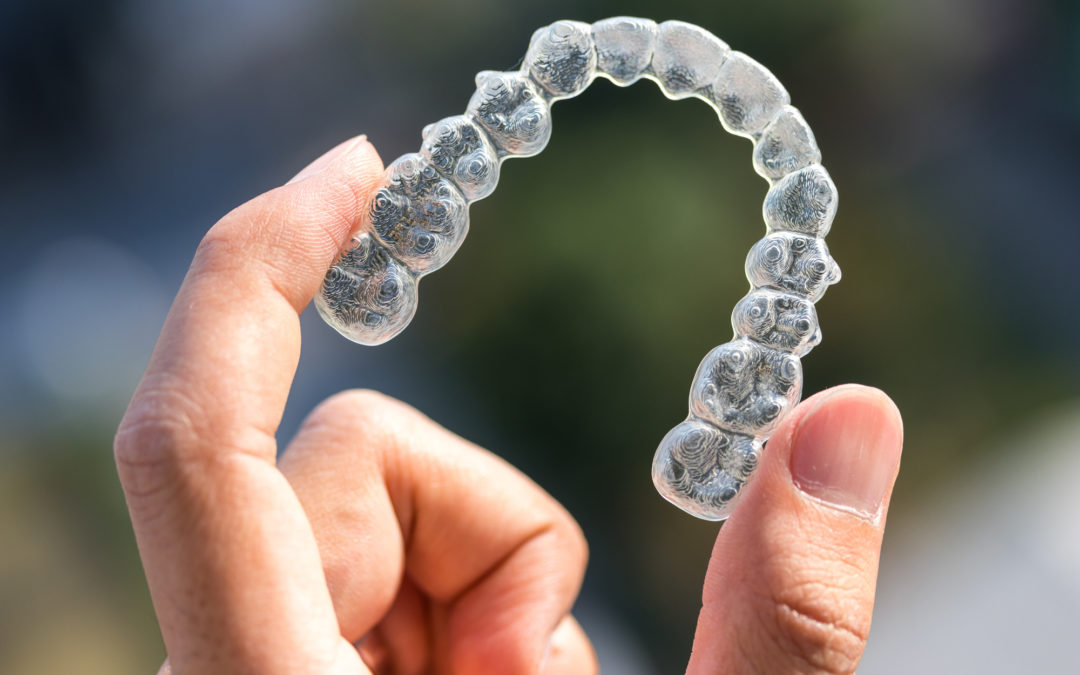News flash: If you’re considering cosmetic orthodontics, a surgical procedure may cost you $5,000 or more. Are you looking into fixing teeth problems this season? When it comes to orthodontics, you might be wondering whether Invisalign or braces are the right choices to fix your underbite. Take a look at the pros and cons of each underbite treatment below!
Intro to Invisalign
As you may already know, the most popular ways to straighten your teeth are either Invisalign or braces. As a result, orthodontists apply both treatments on thousands of dental patients each year. However, you may still be wondering: Which is the best option for my teeth issues?
To solve this problem, we must dive into each dental method and take a look at the differences first.
For the uninitiated, Invisalign is a clear set of aligners that work well to keep your teeth straight over a period of between six months and two years. However, it’s important to know that you should wear Invisalign for most of the day for the best results. That means putting on your retainers every day and every night, except during mealtime.
In addition to this, you need to switch aligners every couple of weeks, depending on exactly what your orthodontist has recommended. Every new set is individually trimmed and custom-made to transform with you as your teeth start to move in the right direction.
On top of that, Invisalign is crafted from unique materials like:
- Medical grade plastic
- Polyurethane thermoplastic
As a result, it can cost several thousand dollars to pay for your new set of aligners. However, the price always varies on a patient-by-patient basis.
Basics of Braces
Now that we got that covered, let’s talk about the basis of braces. We’ve all seen them before – rubber bands, colorful bands, and metal brackets to push your teeth into the proper place. But here’s the thing.
Unlike buying a set of aligners, you don’t have to take anything off when it comes to braces. These permanent metal fixtures are placed on your teeth with a special set of materials so you can do the following while you wear them:
- Eat all of your meals
- Fall asleep at night
- Go to your workplace
On the other hand, you’ve got to make an orthodontist appointment every couple of weeks to get them tightened. During these sessions, your family orthodontist will make sure that everything is going as smoothly as possible. They may even offer you extra items such as rubber bands to do the trick.
In addition to this, most braces are created from “high-grade stainless steel.” Next, these metal brackets are connected to each tooth with a kind of cement. Then, bands, wiring, and spacers are also used to keep your braces in place.
The main difference between the two is that braces can take up to three years to straighten your teeth. As a matter of fact, this process varies depending on your age, the severity of your underbite, and so much more. Plus, you can plan to shell out even more money for braces than a set of aligners too.
Naturally, your orthodontist’s assessment will vary from case-to-case as well!
Maintaining Your Smile
No matter which method you choose, it is just as important to keep your newly straightened teeth as fresh as possible. After all, you wouldn’t want them to shift back out of place after all the time and money invested into them, would you?
When it’s time to have your braces taken off, you’ll most likely be given a retainer that’s custom-fit to suit your new teeth. Similar to Invisalign, these can come in a set of plastic trays to fit your smile. While you may be recommended to wear them for the most time at first, your orthodontist may give you the “green light” to only wear them in the evening over time.
However, if you’ve chosen the Invisalign route, then you may eventually receive a set of retainers to wear at night as well. On the other hand, you may even have more success wearing retainers than those who’ve gotten their braces removed since you are used to putting in your aligners regularly.
Whatever you choose, you must keep your retainer in as often as your orthodontist specifies. Otherwise, your new teeth might start to shift back instantly when they are removed. So, if you’re particularly forgetful, getting a permanent retainer is a smarter option that will save you both money and stress in the long run.
Bottom Line: The Choice Is Yours
We’re not here to tell you whether or not Invisalign or braces are better for you. That’s because the choice is yours in the end. After you think about what you need, you can make the decision between braces and Invisalign on your own.
If it helps, take into consideration the following factors:
- Overall costs
- Care and maintenance
- Time commitments
- Dental aftercare
No matter what you decide, you’ll be sure to have a beautiful smile that you’ll be proud to show off in the long run!
Uninspired by Your Underbite?
Feeling uninspired by your current underbite?
If you’re looking for the best way to solve your underbite issues, we are here to help you out. From getting braces for the first time to investing in a set of Invisalign aligners, there are so many ways to make the most out of your smile. We wish you the best of luck!
Interested in orthodontics, braces, or Invisalign?
If so, don’t hesitate to give our team a call today!

